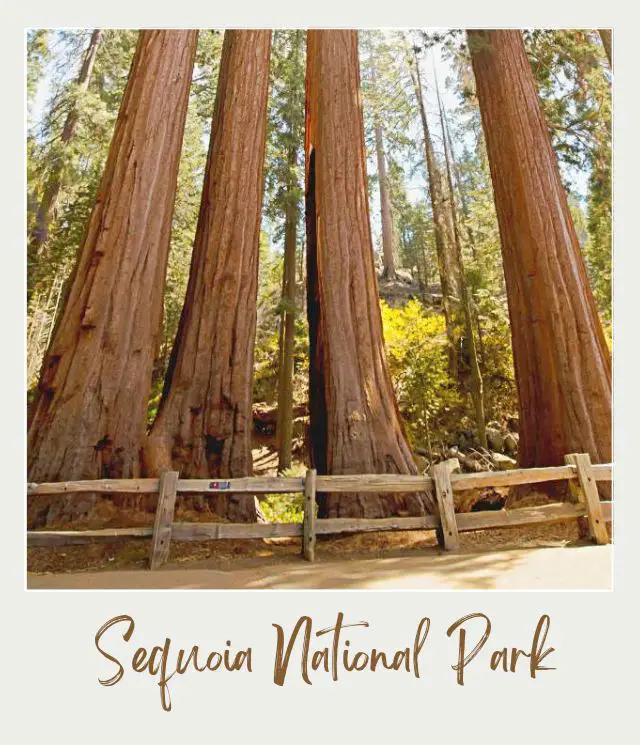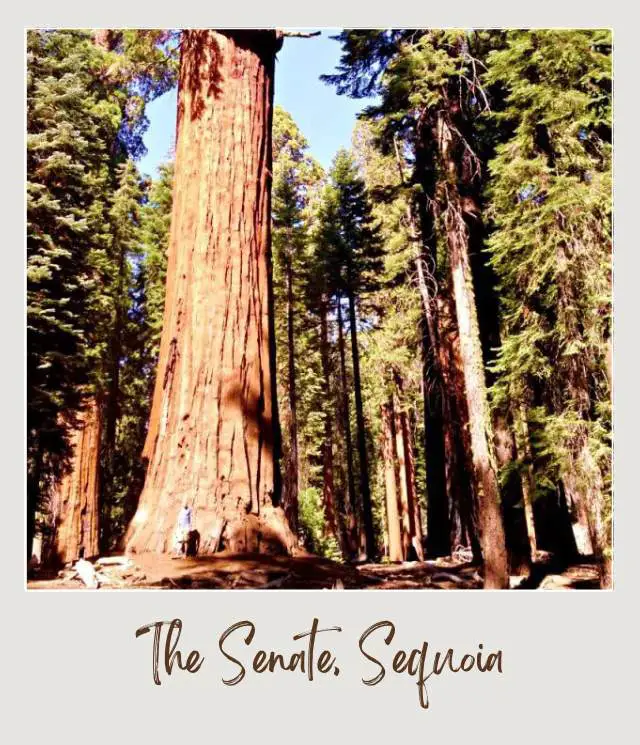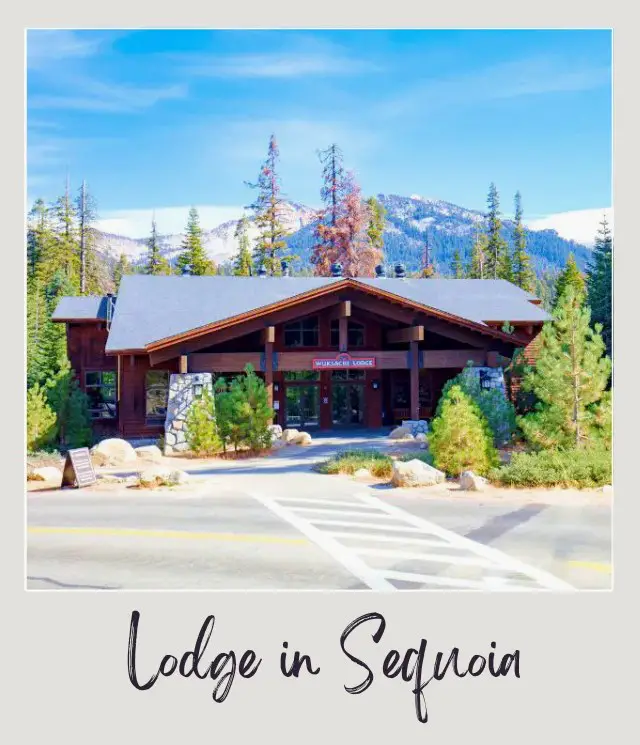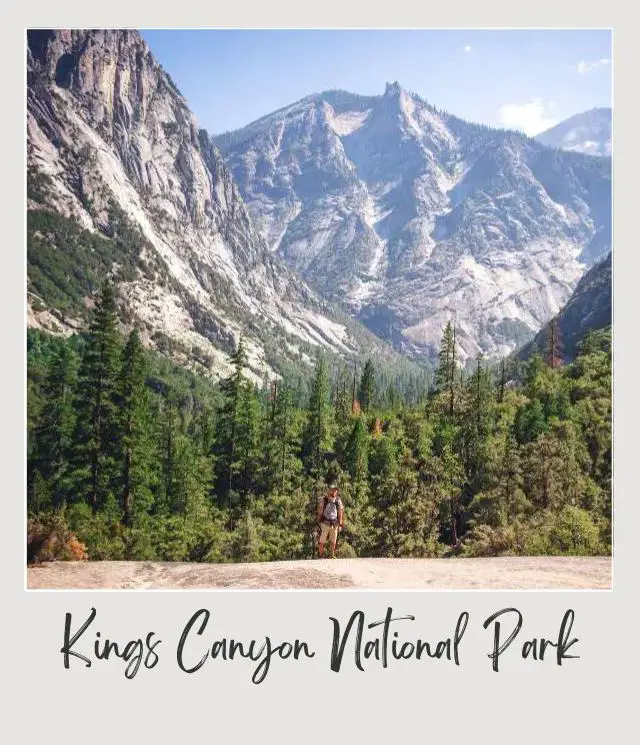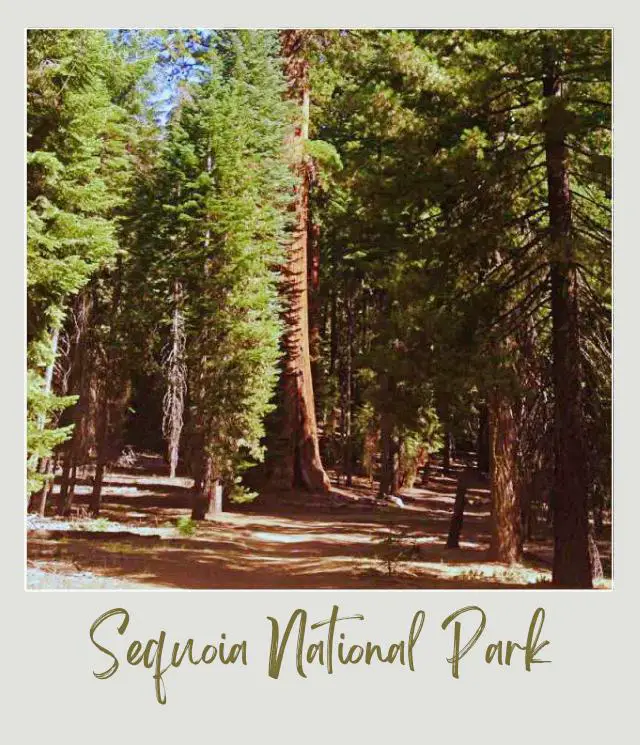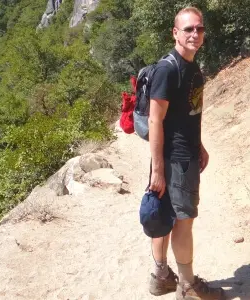There’s plenty of information around about planning a trip to Sequoia National Park. For all sorts of information about the park, check out my Sequoia National Park Guides.
The thing is that most of it focuses on what you should do when you visit Sequoia National Park.
This guide is different. I will share with you what you should AVOID doing when planning your Sequoia National Park visit. This will help you be fully prepared when you visit Sequoia National Park.
I have extensive knowledge of Sequoia National Park. I’ve seen many people make mistakes (and I’ll admit I made a few myself!) that have impacted their trip. So now I’m happy to share what I’ve learned from their (and my) experiences so that you can avoid these common pitfalls.
Let’s take a look at the biggest mistakes to avoid when you plan a trip to Sequoia National Park.
No time right now to discover 7 big mistakes to avoid when planning a trip to Sequoia National Park? Pin It and save it for later:
#1 Not spending enough time there
While you can visit Sequoia National Park in one day, if you do, you’ll miss out on so much of what the park has to offer. Sequoia National Park is home to some of the most incredible nature in the United States, including the world’s largest trees by volume, stunning mountain landscapes, and lots of wildlife.
A single day barely scratches the surface of what Sequoia has to offer. The park is spread over 400,000 acres, with hundreds of miles of hiking trails that range from easy walks to challenging backcountry treks. You could spend a whole day exploring the Giant Forest alone, home to five of the ten largest trees on the planet, including the General Sherman Tree.
Beyond the namesake trees, there are breathtaking sights like Moro Rock, Tunnel Log, and Crescent Meadow to explore. Each area offers its unique experience, from panoramic views to serene forest settings. Add to that the park’s enormous elevation range – from 1,370 to 14,494 feet – with different ecosystems at various altitudes, each deserving time for exploration.
Ideally, plan for several days to truly appreciate the park’s natural beauty, allowing time to hike, take in the vistas, and perhaps catch a glimpse of the local wildlife.
#2 Driving
While driving along the General’s Highway can be a scenic experience, it often comes with the frustrations of traffic congestion and parking difficulties, especially during peak tourist seasons. The narrow, winding roads are not only challenging for drivers but also for finding a parking spot at popular attractions like the General Sherman Tree and Moro Rock.
To avoid these issues, I recommend taking advantage of the park’s shuttle service. The shuttle system provides a convenient way to get to the park’s key points of interest without the hassle of driving and parking. The shuttles run at frequent intervals, allowing you to hop on and off at various stops throughout the park.
Using the shuttle service not only eases your visit but also contributes to the preservation of the park by reducing emissions and traffic.
For detailed information about the shuttle routes, schedules, and guidelines, refer to the National Park Service webpage about the shuttle. Here, you’ll find everything you need to know to plan your shuttle-based exploration of Sequoia National Park, ensuring a smoother and more environmentally friendly experience.
#3 Not hiking the Congress Trail
The Congress Trail is one of the park’s most iconic hiking paths (and my personal favorite), offering a relatively easy and family-friendly loop that allows you to immerse yourself in the heart of the giant sequoias. The Congress Trail is a paved 2-mile loop that starts at the General Sherman Tree, the largest tree on Earth by volume, and meanders through the Giant Forest, home to a stunning array of mammoth trees.
If you skip the Congress Trail, you’ll miss out on the opportunity to see the President Tree, the Senate Group, and the House Group – clusters of giant sequoias named after aspects of the American government (hence the trail’s name).
The trail also features the Room Tree, a hollow sequoia that you can actually walk into, offering a unique perspective on these ancient giants.
The trail is well-maintained and suitable for most fitness levels.
➡️ READ MORE: The Congress Trail Guide
#4 Not making campground or lodging reservations in advance
Sequoia National Park’s popularity means that accommodations within the park, including campgrounds and lodges, can fill up quickly, especially during peak season, which typically runs from late spring through early fall. Without prior reservations, you may find yourself without a place to stay.
The park offers a range of camping experiences, from developed campgrounds with amenities to more primitive backcountry sites. Campsite reservations often open up six months in advance and can be booked through the National Park Service’s official reservation system. If you plan ahead, you can skip the stress of searching for last-minute lodging options and the likelihood of missing out.
Lodging within the park, such as the Wuksachi Lodge, also requires advance booking – and are also in high demand.
If you do miss out, there are vacation rentals nearby – you just need to travel further to get into the park.
#5 Focusing only on the trees
Of course the main reason anyone goes to this national park is the enormous sequoia trees. However, in addition to these amazing giants, there are plenty of other natural and cultural attractions to explore. By concentrating solely on the trees, you’ll overlook the diverse landscapes, wildlife, and historical sites in the park.
Sequoia National Park has high alpine peaks, deep canyons, and rugged foothills. It’s home to a variety of wildlife, including black bears, mule deer, and mountain lions, and offers a chance to see these animals in their natural habitat. Additionally, the park’s numerous meadows, like Crescent Meadow and Big Meadow, are great places for a picnic and wildlife viewing.
Beyond the natural wonders, the park’s museum and visitor centers offer insights into the area’s history, geology, and the ecology of the sequoias. The Giant Forest Museum, in particular, is a must-visit for first-time travelers. You can learn about the lifecycle of the giant sequoias as well as the efforts to preserve and protect these ancient giants.
You should also not miss the chance to climb Moro Rock, a granite dome offering panoramic views of the Great Western Divide and the San Joaquin Valley. The ascent up the stairway to the summit is a memorable experience, and the views (and photo opps) from the top are breathtaking.
The less-traveled areas of the park, such as the Mineral King Valley or the foothills region offer a different perspective of the park and often feature fewer crowds.
#6 Not also visiting Kings Canyon National Park
These two national parks are adjacent to each other and are administered as one unit by the National Park Service. By not venturing into Kings Canyon, you’ll miss out on additional natural wonders that complement the experience of the giant sequoias in Sequoia National Park.
Kings Canyon National Park is home to the General Grant Tree, also known as “the Nation’s Christmas Tree,” the second-largest tree by volume in the world. The park also has some of the deepest canyons in North America, with dramatic landscapes that include rugged cliffs, serene meadows, and the meandering Kings River.
The views in Kings Canyon are amazing, offering a different yet equally stunning perspective compared to its sister park. The park’s Zumwalt Meadow provides a peaceful hike with views of high granite walls, and the drive along Kings Canyon Scenic Byway is considered one of the most beautiful routes in the American West.
#7 Not Getting Travel Insurance
You should, of course, always have travel insurance, but especially when doing things like hiking. You just never know. Travel insurance also covers things like lost or stolen property, trip cancellation, and emergency repatriation. If you want to learn more about all this, check out my Guide to Buying Travel Insurance (on my other blog) before getting your insurance.
➡️ A great insurance option is Travelex. It has coverage for all you’ll need. You can compare Travel Insurance plans here or get a quote right now:

Enjoy your trip to Sequoia National Park!
More Planning Resources for Sequoia National Park
⭐ Sequoia National Park Guide
⭐ 10 Tips For Visiting Sequoia National Park
⭐ The Congress Trail Guide
⭐ How to Get to Sequoia National Park
⭐ All The Airports Near Sequoia National Park
⭐ The Closest Airport To Sequoia National Park
⭐ The Best Time To Visit Sequoia National Park
⭐ Visiting Sequoia National Park: What To Expect Throughout the Year
⭐ 10 Fun Facts About Sequoia National Park
⭐ Best Vacation Rentals Near Sequoia National Park
I hope you found this Sequoia National Park trip planner helpful. Do you have any other tips for visiting Sequoia National Park? I’d love to hear about them. Join my private Facebook group National Parks Collectors and comment and let me know (you can also pick up extra planning tips, share your photos and stories with other national park lovers and more).
If you liked this article about how to plan a trip to Sequoia National Park, Pin It to your Shenandoah National Park board!
James Ian is a national park, camping and hiking expert.
He has dedicated his life to travel, visiting more than 80 countries, all 7 continents and most of the national parks in the United States. With over 35 years experience in the travel industry, James has worked on cruise ships, at resorts and hotels, and as a travel planner who’s helped hundreds of people plan successful trips to US national parks.
Based on his experience visiting our national parks multiple times, in-depth research and expertise as a travel planner, James has published detailed itineraries for many of the major national parks in the US. These itineraries, as well as in-depth park guides, and other resources will help you have your own incredible trip to US national parks without stress and hassle.
As a national park expert, James has contributed to many publications, including USA Today, Newsweek, Time Business News, Savoteur, Best Trip, and Wired.
Read more…
I’m a member of the Amazon Services LLC Associates Program. As an Amazon Associate I earn from qualifying purchases.



